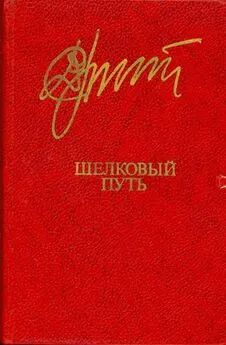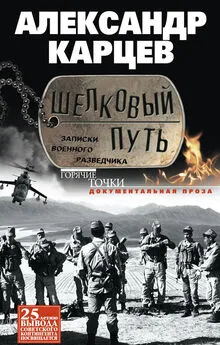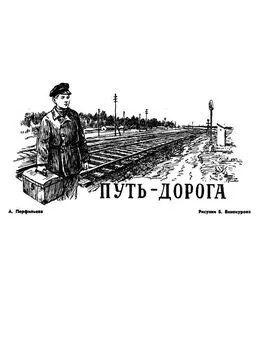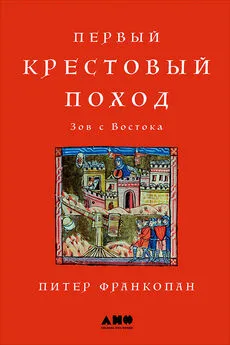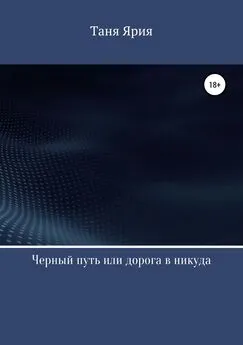Питер Франкопан - Шелковый путь. Дорога тканей, рабов, идей и религий
- Название:Шелковый путь. Дорога тканей, рабов, идей и религий
- Автор:
- Жанр:
- Издательство:Литагент 5 редакция
- Год:2017
- Город:Москва
- ISBN:978-5-699-95706-4
- Рейтинг:
- Избранное:Добавить в избранное
-
Отзывы:
-
Ваша оценка:
Питер Франкопан - Шелковый путь. Дорога тканей, рабов, идей и религий краткое содержание
Вы увидите, что история развивалась совсем не так, как мы привыкли изучать в школе. Так, столетия назад интеллектуальные центры мира, «Оксфорды» и «Кембриджи», «Гарварды» и «Йели», находились не в Европе, а в городах Средней Азии, куда и съезжалась вся просвещенная молодежь в поисках успеха.
Шелковый путь. Дорога тканей, рабов, идей и религий - читать онлайн бесплатно ознакомительный отрывок
Интервал:
Закладка:
472
Там же, р. 12; о Тенгри см. U. Harva, Die Religiösen Vorstellungen der altaischen Völker (Helsinki, 1938), рр. 140–153.
473
R. Mason, ‘The Religious Beliefs of the Khazars’, Ukrainian Quarterly 51.4 (1995), рр. 383–415.
474
Обратите внимание на противоположный аргумент, который разъединяет суфизм и кочевой мир, J. Paul, ‘Islamizing Sufis in Pre-Mongol Central Asia’, in de la Vaissière, Islamisation de l’Asie Centrale , рр. 297–317.
475
Abū Hāmid al-Gharnātī, Tuḥfat al-albāb wa-nukhbat al-i ʿ jāb wa-Riḥlah ilá Ūrubbah wa-Āsiyah , tr. Lunde and Stone, ‘The Travels’, in Land of Darkness , р. 68.
476
A. Khazanov, ‘The Spread of World Religions in Medieval Nomadic Societies of the Eurasian Steppes’, in M. Gervers and W. Schlepp (eds), Nomadic Diplomacy, Destruction and Religion from the Pacific to the Adriatic (Toronto, 1994), рр. 11–34.
477
E. Seldeslachts, ‘Greece, the Final Frontier? The Westward Spread of Buddhism’, in A. Heirman and S. Bumbacher (eds), The Spread of Buddhism (Leiden, 2007); R. Bulliet, ‘Naw Bahar and the Survival of Iranian Buddhism’, Iran 14 (1976), рр. 144–145; Narshakhī, History of Bukhara , р. 49.
478
Constantine Porphyrogenitus, De Administrando Imperio , ed. G. Moravcsik, tr. R. Jenkins (Washington, DC, 1967), 37, рр. 166–170.
479
Ibn Faḍlān, ‘Book of Ahmad ibn Faḍlān’, р. 22. Некоторые ученые преуменьшают значение кочевого скотоводства в степи, см. Б. Заходер, Каспийский свод сведений о Восточной Европе : В 2-х т. – М., 1962. – Т. 1 – С. 139–140.
480
D. Dunlop, The History of the Jewish Khazars (Princeton, 1954), р. 83; Баранов Л. Таврика в эпоху раннего средневековья (салтово-маятская культура). – Киев, 1990. – С. 76–79.
481
A. Martinez, ‘Gardīzī’s Two Chapters on the Turks’, Archivum Eurasiae Medii Aevi 2 (1982), р. 155; T. Noonan, ‘Some Observations on the Economy of the Khazar Khaganate’, in Р. Golden, H. Ben-Shammai and A. Róna-Tas (eds), The World of the Khazars (Leiden, 2007), рр. 214–215.
482
Баранов, Таврика, с. 72–76.
483
Al-Muqaddasī, in Land of Darkness , рр. 169–170.
484
Abū Hāmid, ‘Travels’, р. 67.
485
McCormick, Origins of the European Economy , рр. 369–384.
486
J. Howard-Johnston, ‘Trading in Fur, from Classical Antiquity to the Early Middle Ages’, in E. Cameron (ed.), Leather and Fur: Aspects of Early Medieval Trade and Technology (London, 1998), рр. 65–79.
487
Mas ʿūdī, Kitāb al-tanbīh wa-al-ishrāf , tr. Lunde and Stone, ‘The Meadows of Gold and Mines of Precious Gems’, Land of Darkness , р. 161.
488
Muqaddasī, Aḥsanu-t-taqāsīm fī ma ʿ rifati-l-aqālīm , tr. Lunde and Stone, ‘Best Divisions for the Knowledge of the Provinces’, Land of Darkness , р. 169.
489
Abū Hāmid, ‘Travels’, р. 75.
490
R. Kovalev, ‘The Infrastructure of the Northern Part of the “Fur Road” between the Middle Volga and the East during the Middle Ages’, Archivum Eurasiae Medii Aevi 11 (2000–2001), рр. 25–64.
491
Muqaddasī, Best Division of Knowledge , р. 252.
492
Ibn al-Faqīh, Land of Darkness , р. 113.
493
al-Muqaddasī, Best Division of Knowledge , р. 245.
494
Краткий обзор – G. Mako, ‘The Possible Reasons for the Arab-Khazar Wars’, Archivum Eurasiae Medii Aevi 17 (2010), рр. 45–57.
495
R.-J. Lilie, Die byzantinische Reaktion auf die Ausbreitung der Araber. Studien zur Strukturwandlung des byzantinischen Staates im 7. und 8. Jahrhundert (Munich, 1976), рр. 157–160; J. Howard-Johnston, ‘Byzantine Sources for Khazar History’, in Golden, Ben-Shammai and Róna-Tas, World of the Khazars , рр. 163–194.
496
Единственным исключением был брак дочери императора Ираклия с тюркским каганом в разгар противостояния с персами в начале седьмого века, C. Zuckermann, ‘La Petite Augusta et le Turc: Epiphania-Eudocie sur les monnaies d’Héraclius’, Revue numismatique 150 (1995), рр. 113–126.
497
Ibn Faḍlān, ‘Book of Ahmad ibn Faḍlān’, р. 56.
498
Dunlop, History of the Jewish Khazars , р. 141.
499
См. Р. Golden, ‘The Peoples of the South Russian Steppes’, in The Cambridge History of Early Inner Asia (Cambridge, 1990), рр. 256–284; Новосельцев А. П. Хазарское государство и его роль в истории Восточной Европы и Кавказа. – М., 1990.
500
Р. Golden, ‘Irano-Turcica: The Khazar Sacral Kingship’, Acta Orientalia 60.2 (2007), рр. 161–194. Некоторые ученые интерпретируют изменение характера роли кагана как результат сдвига в религиозных верованиях и обычаях в этот период, см., например, J. Olsson, ‘Coup d’état, Coronation and Conversion: Some Reflections on the Adoption of Judaism by the Khazar Khaganate’, Journal of the Royal Asiatic Society 23.4 (2013), рр. 495–526.
501
R. Kovalev, ‘Commerce and Caravan Routes along the Northern Silk Road (Sixth – Ninth Centuries). Part I: The Western Sector’, Archivum Eurasiae Medii Aevi 14 (2005), рр. 55–105.
502
Mas ʿūdī, ‘Meadows of Gold’, рр. 131, 133; Noonan, ‘Economy of the Khazar Khaganate’, р. 211.
503
Istakhrī, Kitāb suwar al-aqalīm , tr. Lunde and Stone, ‘Book of Roads and Kingdoms’, in Land of Darkness , рр. 153–155.
504
J. Darrouzès, Notitiae Episcopatuum Ecclesiae Constantinopolitanae (Paris, 1981), рр. 31–32, 241–242, 245.
505
Istakhrī, ‘Book of Roads and Kingdoms’, рр. 154–155.
506
Mason, ‘The Religious Beliefs of the Khazars’, р. 411.
507
C. Zuckerman, ‘On the Date of the Khazars’ Conversion to Judaism and the Chronology of the Kings of the Rus’ Oleg and Igor: A Study of the Anonymous Khazar Letter from the Genizah of Cairo’, Revue des Etudes Byzantines 53 (1995), р. 245.
508
Там же, с. 243–244. О заимствованиях из письма Константина – P. Meyvaert and P. Devos, ‘Trois énigmes cyrillo-méthodiennes de la “Légende Italique” résolues grâce à un document inédit’, Analecta Bollandiana 75 (1955), рр. 433–440.
509
Лавров П. Материалы по истории возникновения древней славянской письменности. – Л., 1930. – С. 21; F. Butler, ‘The Representation of Oral Culture in the Vita Constantini ’, Slavic and East European Review 39.3 (1995), р. 372.
510
‘The Letter of Rabbi Hasdai’, in J. Rader Marcus (ed.), The Jew in the Medieval World (Cincinnati, 1999), рр. 227–228. Также см. здесь N. Golb and O. Pritsak (eds), Khazarian Hebrew Documents of the Tenth Century (London, 1982).
511
‘The Letter of Joseph the King’, in J. Rader Marcus (ed.), The Jew in the Medieval World , р. 300. Обсуждение даты и контекста – Р. Golden, ‘The Conversion of the Khazars to Judaism’, in Golden, Ben-Shammai and Róna-Tas, World of the Khazars , рр. 123–162.
512
R. Kovalev, ‘Creating “Khazar Identity” through Coins – the “Special Issue” Dirhams of 837/8’, in F. Curta (ed.), East Central and Eastern Europe in the Early Middle Ages (Ann Arbor, 2005), рр. 220–253. Об изменении практики погребения – V. Petrukhin, ‘The Decline and Legacy of Khazaria’, in Р. Urbanczyk (ed.), Europe around the Year 1000 (Warsaw, 2001), рр. 109–122.
513
Qur ʾ ān , 2.285, р. 48; 3.84, р. 60.
514
Zuckerman, ‘On the Date of the Khazars’ Conversion’, р. 241, а также Golb and Pritsak, Khazarian Hebrew Documents , р. 130.
515
Mas ʿūdī, ‘Meadows of Gold’, р. 132; об элите Иудаизма – Mason, ‘The Religious Beliefs of the Khazars’, рр. 383–415.
516
Pritsak and Golb, Khazarian Hebrew Documents ; Mas ʿūdī, ‘Meadows of Gold’, р. 133; Istakhrī, ‘Book of Roads and Kingdoms’, р. 154.
517
Ibn Khurradādhbih, ‘Book of Roads and Kingdoms’, р. 110.
518
Там же, рр. 111–112.
519
Там же, р. 112.
520
Ibn al-Faqīh, ‘Book of Countries’, р. 114.
521
Луитпранд Кремонский, посетивший Константинополь в десятом веке, думал, что название «русы» произошло от греческого слово rousios , или красный, из-за отличительного цвета их волос, The Complete Works of Liudprand of Cremona , tr. Р. Squatriti (Washington, DC, 2007), 5.15, р. 179. Фактически слово происходит от скандинавских слов roþrsmenn и roðr , означающих ряд. S. Ekbo, ‘Finnish Ruotsi and Swedish Roslagen – What Sort of Connection?’, Medieval Scandinavia 13 (2000), рр. 64–69; W. Duczko, Viking Rus: Studies on the Presence of Scandinavians in Eastern Europe (Leiden, 2004), рр. 22–23.
522
S. Franklin and J. Shepard, The Emergence of Rus’ 750–1200 (London, 1996).
Читать дальшеИнтервал:
Закладка:


